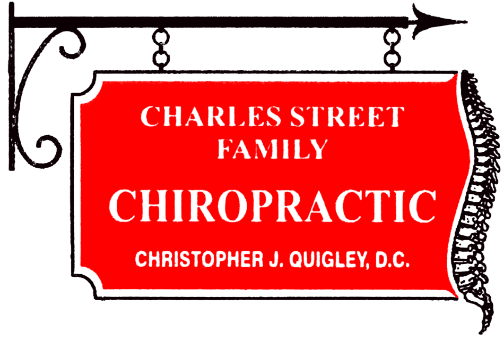
The Connection Between Posture and Pain in Boston, MA
When it comes to pain, most of us immediately think of injuries, stress, or overuse, but one often overlooked culprit is posture. Many of us spend long hours hunched over computers, phones, or desks. Over time, this poor posture can lead to significant discomfort, from back and neck pain to headaches. However, the connection between posture and pain is something you can address with chiropractic care from our team at Charles Street Family Chiropractic.
How Are Posture and Pain Related?
It’s easy to overlook how your posture affects your body. But when your spine is misaligned, muscles, joints, and ligaments are forced to compensate for the imbalance. This stress leads to discomfort and pain. Simply put, good posture keeps your spine in proper alignment, reducing unnecessary strain on the muscles and joints that support it.
But your body pays the price when posture slips, whether from slouching, forward head posture, or misalignment. That’s when you begin to experience nagging back pain, neck discomfort, or even chronic headaches. We offer postural correction to help you regain proper alignment and restore balance in your body, which ultimately relieves pain and prevents it from returning.
Common Bad Postures and Their Impact
We all fall into bad habits, especially in today’s digital world. Whether you’re working from home or binge-watching your favorite show, it’s easy to slip into positions that hurt your body. Here are some of the most common posture mistakes and how they lead to pain.
1. Forward Head Posture
You’ve probably caught yourself looking at your phone or computer screen with your head poking forward. This might feel normal, but over time, it puts a considerable strain on your neck and shoulders. It can cause headaches and neck pain and even contribute to upper back discomfort.
2. Slouching or Rounded Shoulders
We’re all guilty of slumping in our chairs after a long day. Slouching causes your spine to curve in unnatural ways, which puts pressure on your lower back and can lead to chronic pain. It also tightens up the muscles in your chest, making it harder to stand up straight without discomfort.
3. Sitting With Poor Alignment
Long hours of sitting can wreck your back if you’re not paying attention. If you’re hunched over at your desk or sitting on the couch in a weird position, your spine becomes misaligned. This causes your muscles to overwork, leading to stiffness and pain in the lower back and hips.
4. Shifting Weight to One Side
Do you tend to lean on one hip when standing? This “lazy” posture shifts your spine out of alignment, causing uneven pressure on your joints and muscles. Over time, it can lead to discomfort in your lower back and hips.
Corrective Exercises to Improve Posture
A few simple exercises can really improve your posture, and the pain associated with it. You can increase the flexibility of your muscles, and then the proper posture will start to feel more natural. By targeting the right muscles, you’ll be able to move better and will start feeling better. Here are some exercises to get you started:
1. Chin Tucks for Neck Relief
This might sound simple, but it’s super effective. Gently tuck your chin toward your chest, hold for a few seconds, and then lift your chin to the sky. Repeat this motion a few times to really start to loosen up a stiff neck. This exercise helps realign your neck and relieve the tension that builds up with poor posture.
2. Shoulder Blade Squeezes
This one’s easy to do while sitting or standing. Squeeze your shoulder blades together as if trying to pinch a pencil between them. This exercise strengthens your upper back and helps combat rounded shoulders caused by slouching.
3. Chest Openers
When you slouch forward, your chest muscles get tight. The chest opener stretch will relieve the tension you maybe didn’t even know was there and improve your posture. This is similar to the shoulder blade squeezes, but your focus should be on your chest and opening it up rather than on your shoulders. Simply pull your arms back, squeezing your shoulder blades together. Hold for 10-15 seconds and release.
4. Cat-Cow Stretch for Your Back
This simple yoga stretch is perfect for improving flexibility in your spine. Start on all fours, arch your back upwards (like a cat), then dip it down (like a cow). It’s great for relieving lower back pain.
5. Planks for a Strong Core
A solid core is the foundation of good posture. Doing planks can help strengthen your abs, lower back, and hips. These muscles keep your spine stable and support better alignment throughout the day. By strengthening your core, you’ll experience less pain as your body naturally can hold itself better.
Preventing Poor Posture
If you’re looking for alignment and posture tips for lower back pain, prevention is key. Here are a few simple steps to help you avoid falling back into bad habits:
- Set Up Your Workspace Right – Keep your computer at eye level, use a chair with lumbar support, and make sure your feet are flat on the floor. It sounds simple, but it can make a world of difference.
- Stand and Move - If you sit for long periods, take breaks to stretch and walk around. Movement helps prevent stiff muscles.
- Mind Your Sleep Position - Try new sleeping positions. Try sleeping on your back with a good pillow for neck support. If you’re a side sleeper, place a pillow between your knees to keep your spine in a neutral position.
- Stay Active - Cardio, strength training, and stretching can keep your muscles balanced and your posture in check. Regular physical activity is key to long-term spinal health.
Get Help from Charles Street Family Chiropractic
If you’ve been struggling with poor posture and the pain it causes, we’re here to help. At Charles Street Family Chiropractic, we don’t just want to relieve your pain temporarily. We’re committed to fixing the root cause of your discomfort. Through spinal adjustments and corrective exercises, we’ll help you return to feeling like yourself again. Contact us today to get started.
